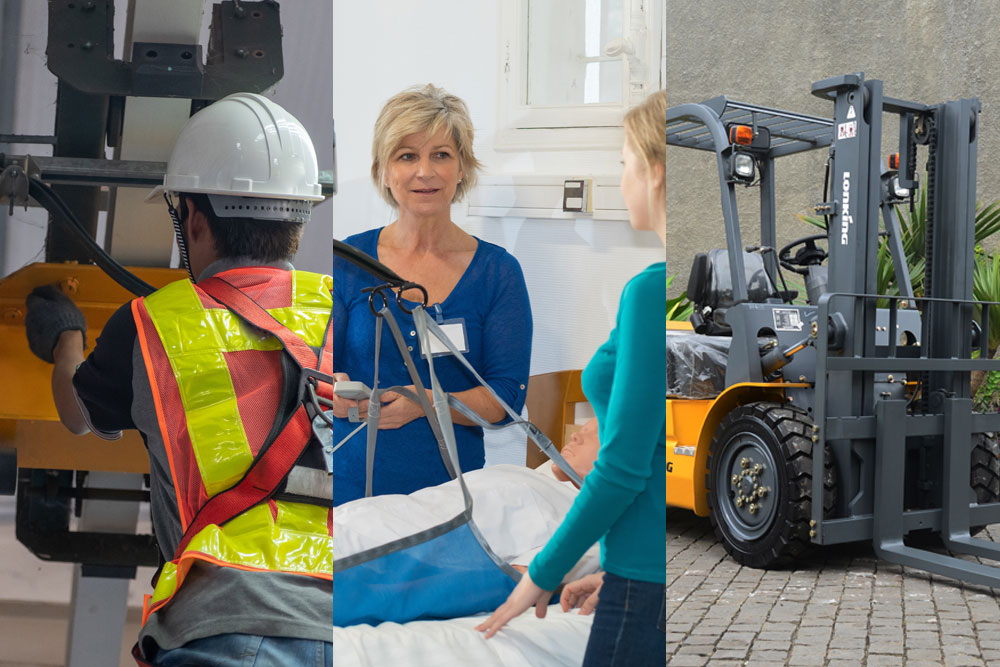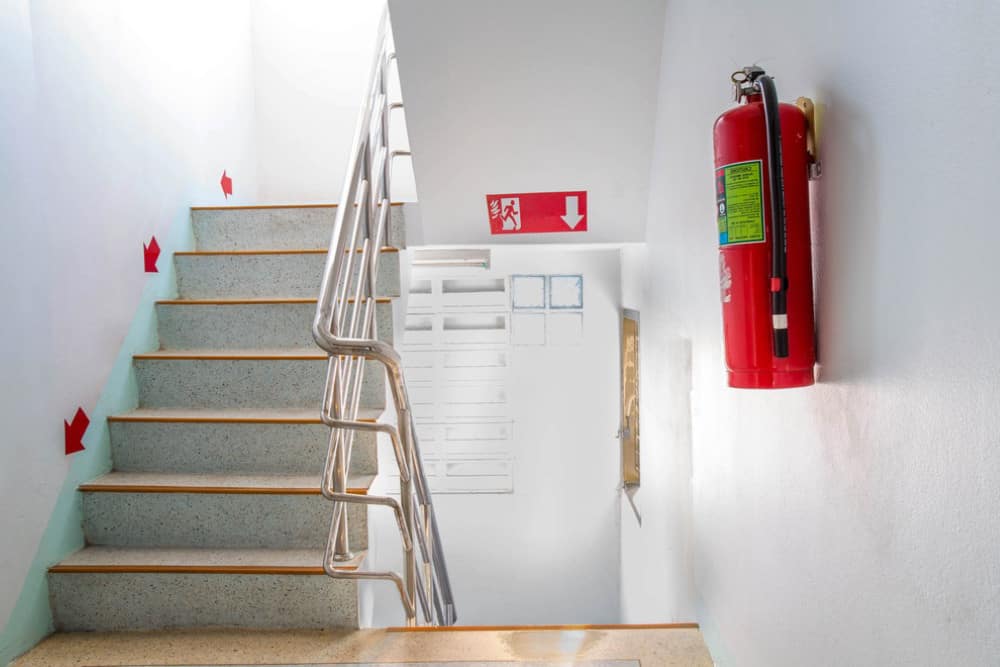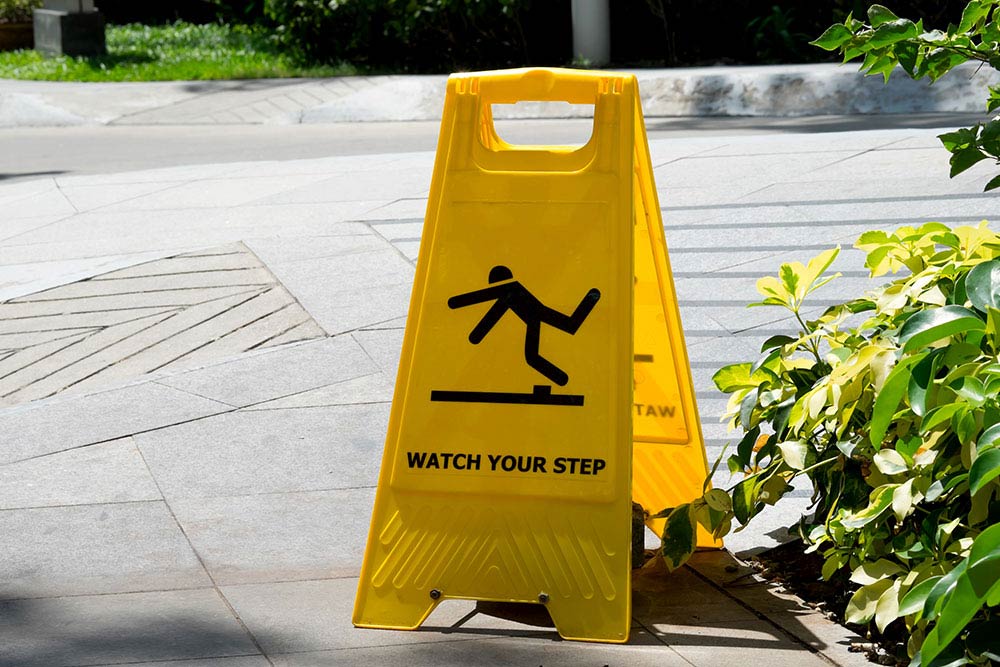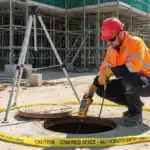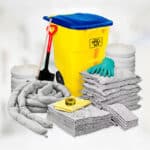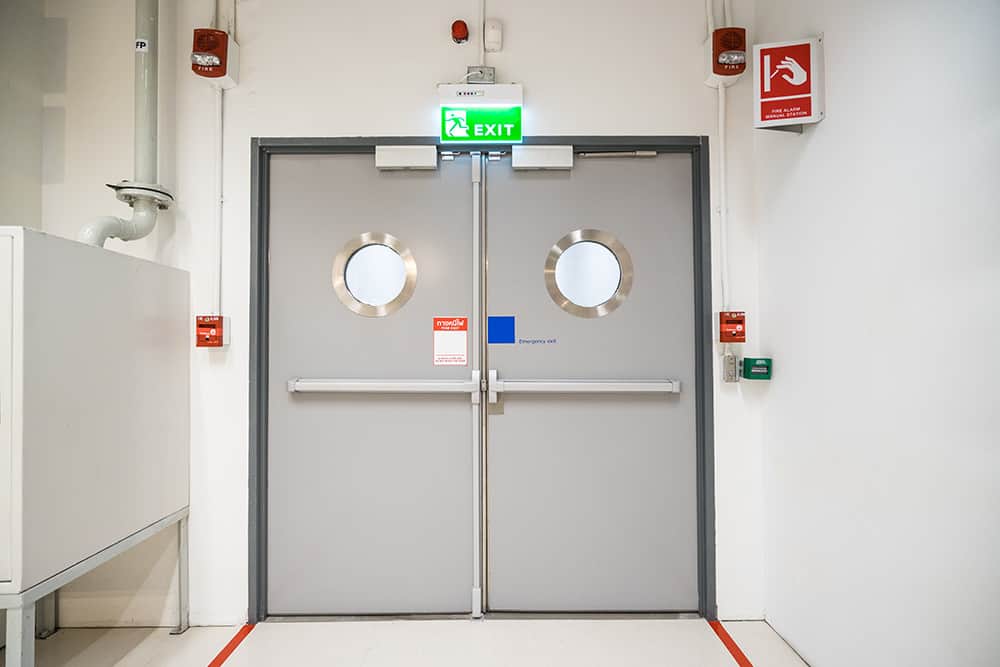
Many buildings used for domestic or non-domestic purposes in the UK are legally required to have fire doors installed. If you are a landlord or an employer, you need to be sure that you have the right types of fire doors installed in the right place.
In this blog, we look at what constitutes a fire door, the law governing fire doors, the different types of fire doors, and exactly what types of buildings need to have fire doors installed.
Key Takeaways
In the UK, fire doors are required in:
- Non-domestic buildings: All workplaces, factories, commercial and public premises must have them on escape routes.
- Mixed-use buildings: Between residential and commercial sections.
- Domestic dwellings over three storeys: Between rooms and stairwells, also between garages/lofts and living areas.
- Flats and HMOs: At entrances to communal areas and between rooms and escape routes in upper floors.
What Are Fire Doors?
Fire doors are passive fire safety devices that are intended to delay and contain the spread of fire or smoke. They give people safe routes to evacuate a building, emergency services safe ways into a building and provide precious time to save lives and property.
A fire door is not just a door, but a system of components designed to perform to a certain level in a fire. All fire doors have been rigorously designed and tested. So, when they are installed, you can match the level of performance to the legal requirements of the building.
The Legal Requirements for Fire Doors
In England and Wales, fire doors are governed by the Regulatory Reform (Fire Safety) Order 2005 and the Fire Safety (England) Regulations 2022.
In Scotland, they’re governed by the Fire Safety (Scotland) Regulations 2006, and in Northern Ireland, by the Fire Safety Regulations (Northern Ireland) 2010.
The main legal requirements for fire doors are:
- Emergency doors should open in the direction of escape
- Sliding or revolving doors must not be used for emergency exits
- Any person should be able to open emergency doors easily and immediately
The law also requires preventative and protective measures. Fire doors are used as part of these measures, such as to prevent the spread of fire and smoke and to keep emergency routes clear.
Fire Door Inspection Training
Ensure fire doors are safe, functional and compliant. This RoSPA-assured online Fire Door Inspection Training course explains the requirements and procedures for compliant fire door inspections. Recommended by the National Association of Fire Door Inspectors, it covers when to inspect, what to check and how to act on defects.
Fire Doors Features
Unlike a normal door, a fire door is constructed of high-grade fire-resistant components and materials. They are designed to stop the spread of fire and can be used to create fire compartments in a building.
Fire doors can be constructed from wood, steel or even glass. They can be hung as single doors or as double doors.
Common features of fire doors include:
- At least three heat-resistant, commercial-grade hinges
- An automatic door closer
- Intumescent seals, smoke seals, acoustic seals or a combination thereof
- Specially tempered fire-resistant glazing
- A fire door retainer
- An ‘automatic fire door’ sign, a ‘fire exit’ sign or a ‘fire door – keep shut’ sign
Types of Fire Doors
Fire doors have a range of different classifications. The most common is an FD30 door, which can withstand a fire for 30 minutes – the number in the certification signifies how many minutes that the door can withstand a fire.
FD30 fire doors are recommended for smaller buildings, while FD60 fire doors are suitable for larger buildings. Other ratings, such as FD90 and FD120 exist and are used where higher levels of protection are required.
Fire doors can also be rated for factors such as smoke and acoustics.
Fire doors can either be internal fire doors or fire exit doors. An internal fire door is specifically designed to slow the spread of fire. A fire exit door will be fitted with a fast-release mechanism that allows for easy access to the outside. Fire exit doors may or may not have fire-resistant properties.
Where Are Fire Doors Required?
Non-Domestic Properties
It’s a legal requirement that fire doors must be installed in all properties that are used for non-domestic purposes. This includes businesses, factories, commercial properties and public buildings.
Fire doors must be placed so that they form a clear horizontal or vertical escape route throughout the building.
- A horizontal route can direct people to a fireproof area on a particular floor of a building or to the outside of the building
- A vertical route will direct people to a stairwell

Mixed-Use Buildings
Fire doors are also required to be placed in buildings that are used for both domestic and commercial purposes. All doors that are located between the residential and commercial spaces of a mixed-purpose building must be fire doors.
Domestic Dwellings Over Three Storeys
Any domestic dwelling that is three storeys high or over must have fire doors installed. All doors between habitable rooms and stairwells must be fire doors.
If there is an internal garage or a converted loft, these areas also need to have fire doors installed as entryways to the house.
Flats and Houses in Multiple Occupation
All blocks of flats or houses in multiple occupation (HMO) must have a fire door at the entrance point of any communal areas.
Any flats that are 4.5 metres above ground level must have fire doors fitted between habitable rooms and a fire door as the front door.
Ground floor flats are required to have a fire door at the entrance if the front door opens onto a communal area. If the internal rooms have easy access to the outside, they do not need to be fitted with fire doors.
Who Can Install Fire Doors?
A so-called ‘responsible person’ holds the responsibility for the installation of fire doors, as stipulated by the Regulatory Reform (Fire Safety) Order 2005 (RRO). A ‘responsible person’ is defined as any person who holds a level of control over a property. A landlord, a property manager, or an employee can act as the ‘responsible person’. This person has a duty to ensure that all fire doors are fitted correctly and that they are regularly inspected.
It should be noted that there is no legal requirement for the person who installs the fire doors to hold any particular certifications or qualifications. The RRO states only that the person fitting the doors be ‘competent’. A competent person is defined as someone who has ‘sufficient training and experience or knowledge and other qualities.’
Since fire doors must meet stringent safety standards, it is advisable to have them installed by a professional and reputable company. Two UK fire door schemes provide independent verification of the competence of an installer: FIRAS and the BM Trada.
Relevant Fire Door Regulations and Standards for Employers and Landlords
- The Regulatory Reform (Fire Safety) Order 2005
- The Fire Safety (England) Regulations 2022
- The Fire Safety (Scotland) Regulations 2006
- The Fire Safety Regulations (Northern Ireland) 2010
- The Code of Practice for Fire Door Assemblies BS 8214
- BS 9991 Fire Safety in the Design, Management and Use of Residential Buildings
- BS 9999 Code of Practice for Fire Safety in the Design, Management and Use of Buildings
Learn Complaint Fire Door Inspection
Any person who is deemed to be a ‘responsible person’ under the RRO has a duty to ensure that regular fire door inspections are conducted.
Completing our Fire Door Inspection Training course will provide you or a member of your staff with the skills needed to properly inspect fire doors. The course can be taken online so it can easily be slotted into your work schedule.
Consisting of three modules with a multiple-choice test at the end, the Fire Door Inspection training runs for approximately three hours. All trainees who pass the course are awarded a certificate assured by the Royal Society for the Prevention of Accidents (RoSPA).


